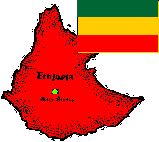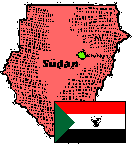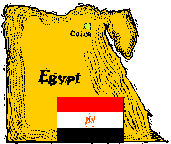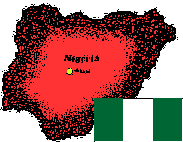Equinealities of Africa |
 Nigeria
Nigeria
There is little information available on many of the African breeds of horses. Most have considerable variation in conformation and few, if any, have breed registries. The following overview is provided to encourage our members and visitors to help us in locating more information on each of the breeds. Much of this information has been obtained from the Oklahoma State University website.
|

AbyssinianFrom Ethiopia comes the Abyssinian. It is a light horse breed of pony size with considerable variation in coat color, conformation and size.
|

DjermaThis light horse breed comes from western Africa and is found along the middle Niger. Originating from Barb and Dongola forebears, the Djerma usually has dark coat coloring.
|

DongolaThis light horse from the northern Sudan and western Eritrea, is also known as Dongalawi, Dongolas, or Dongolaw. Reddish-bay in color, the Dongola often has a white blaze on its face and white leg markings. Two breeds were developed from the Dongola, the West African Dongola and the Sudanese Countrybred. This breed is considered rare.
|
Sudan Country-BredA light riding horse, this breed was developed during the 20th century in Sudan. Arabians and Thoroughbreds were crossed with the Dongola to produce the Sudan Country-Bred. Predominant coat colors are bay, brown, chestnut, roan, grey, or black.
|
TawleedThis riding horse was developed in the Khartoum region of Sudan. Sudan Country-Breds were upgraded with exotic breeds, the Thoroughbred being used most for this prupose.
|
Western Sudan PonyFrom southern Darfar and southwestern Kordofan in Sudan, the Western Sudan Pony is also known as Darfur Pony, Gharkawi, or Kordofani. The coat is predominantly light bay, chestnut or grey, and white markings are frequent.
|

EgyptianDeriving its name from its country of origin, the Egyptian is a light riding horse of the Arab type. Also known as Baladi, the Egyptian has a herdbook, which was formed in 1900.
|

FleuveIn the western African country of Senegal, the Fleuve is a light horse developed from Barbs and local ponies. Also known as Cheval du fleuve, it was used in the development of the Fouta breed.
|
FoutaAlso known as the Foutanké, this horse is also found in Senegal. It is a light horse derived from the Fleuve and M'Bayar breeds.
|
M'BayarFrom the Baol region of Senegal, the M'Bayar is believed to have descended from Barb horses. Primarily bay or chestnut, this breed was used with the Fleuve to develop the Fouta.
|

Kirdi PonyPrimarily used for riding, this pony is found in southwestern Chad and northern Cameroon along the Logone River basin. It is also known by many names: Cameroon Pony, Lakka, Logone, Mbai, M'baye, Moussey, Mussey, Pagan, and Sara.
|
Nooitgedacht PonyDeveloped during the 1950s, the Nooitgedacht Pony is a riding and draft pony in the eastern Transvaal region of South Africa. Basuto Ponies with some Boer and Arab blood were used to establish this pony at the Nooitgedacht Research Station near Ermelo. A rare breed, the Nooitgedacht is also known as Nooitgedachtperd or Nooitgedachter.
|
VlaamperdDeveloped for riding and draft, the Vlaamperd is found in South Africa. Friesians were crossed with Cape Harness horses, Hackneys, and Thoroughbreds. This breed is nearly extinct.
|

Somali PonyTaking its name from its country of origin, Somalia, the Somali pony usually has a chestnut or grey coat color. There are a number of varieties of this rare breed from eastern Africa, which include Dor, Mijertinian, Daror and Nogali.
|
West African BarbAs known as the Arab-Barb, the West African Barb is a light riding and draft horse . It is found in most regions throught West Africa. This breed dervies from the Barb and is usually grey in color.
|
|
Primary references for this page:
|
|
Visit Oklahoma State University for information on the following breeds:
For more information, visit: |
© Copyright 1998-2002 NorthWest Breyer Horse Club.
Published August 2001 in the North West Breyer Horse Club newsletter. (em)

|
© 1997-2007
NW Breyer Horse Club & Refiner of Gold Creations Equinealities in place since 1997, Section in place 2001, Updated 3/13/2007 |



|
| ||

|
|||||

